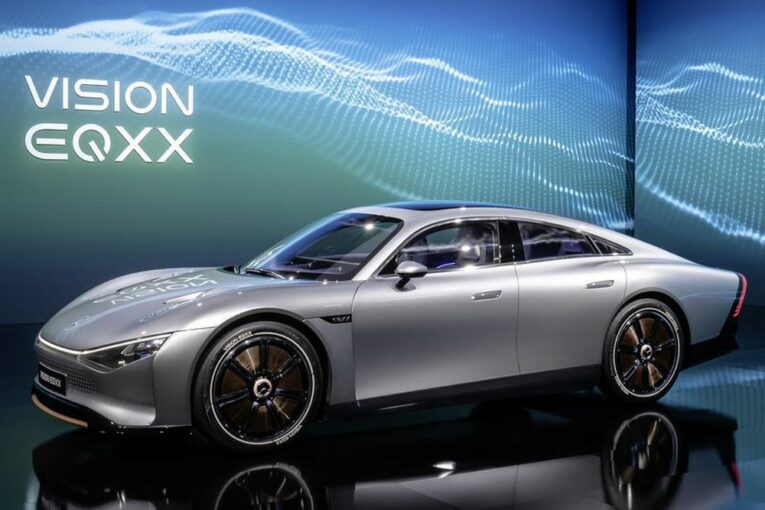
Mercedes-Benz has unveiled an all-electric concept car, the Vision EQXX, which could have a range of up to 1,000 kilometres on a charge. Using the concept’s technology, the company said it will “build the world’s most desirable electric cars.”
Based on average distances driven per year, an owner in the U.S. would only have to fully recharge the car twice a month. It uses less than 10 kWh of electric energy for 100 kilometres, and in gasoline equivalent, achieves close to 1.0 L/100 km.
It’s not just about increasing the size of the battery, the automaker said, but that its international team of engineers “pulled out all the stops in drivetrain efficiency, energy density, aerodynamics and lightweight design.” The battery is 50 per cent smaller and 30 per cent lighter than the one in the company’s EQS electric car, but holds almost 100 kWh of energy, and its size means it can be used in compact cars.
The EQXX was designed and developed in-house in just 18 months, and Mercedes-Benz is claiming benchmark efficiency of 95 per cent from the battery to the wheels — and if so, that’s a considerable breakthrough, given that most electric vehicles only convert about 76 per cent of energy to moving the tires, according to Natural Resources Canada (gasoline cars, by comparison, are about 16 per cent).
The concept car also uses recycled and plant-based materials; ultra-low-rolling-resistance tires; lightweight magnesium wheels and aluminum brake discs; a body made of ultra-high-strength steel and reinforced plastics; and springs made of glass-fibre-reinforced plastic.
Thin solar panels on the roof collect energy and can add up to 25 kilometres of range on a day’s drive in ideal conditions. It does this by feeding a smaller battery that runs the car’s lights, climate and other systems, but the company said it is working on a system for solar power to charge the high-voltage propulsion battery too.
Mercedes-Benz said the Vision EQXX is its halo car for an all-electric future, and that it is transforming into an “all-electric and software-driven company.”
The article first appeared in Driving.ca
You can read more of the news on source
